Mientras sigue la investigación de los incendios de las baterías de ion litio del Boeing 787 Dreamliner, Boeing ha ofrecido una presentación para explicar como funciona el sistema eléctrico del avión.
A continuación ofrecemos la transcripción en inglés del audio del video:
Mike Sinnett: My name is Mike Sinnett. I’m the vice president of Engineering and the chief project engineer for the 787 program. There’s been a lot of interest in what an electrical power system is on an airplane and how our power system is different than other airplanes. And then what role the batteries play in the power system.
So what is an electrical system? The electrical system generates and distributes power for all the other systems on the airplane that need power. There are many systems on airplanes that need power; flight controls, avionics, air conditioning, in-flight entertainment. All of these systems on the airplane use electrical power. And because the airplane carries batteries, but only enough for some very small loads, we have to generate power while the airplane’s in the air. And then we have to safely distribute that power to the other systems on the airplane.
There are many backups and there are many redundancies on all of our airplanes from an electrical system perspective.
On the ground the airplane can also run on power from ground carts. So if the airplane’s at the gate, the airplane is either running on APU power from the auxiliary power unit or it’s running on engine power when the engines are operating, or it’s plugged into a ground cart and it’s running on ground cart power or facility power at the airport. And that’s true, again, across all of our airplane models.
There’s been a lot of questions recently about what more electric means in the context of the 787, more electric architecture. Most commercial airplanes generate power in many different ways and we use power many different ways on airplanes. If you think back to even the days of the 707, our commercial airplanes generate power electrically from the engines. We also generate power hydraulically from pumps that are mounted to the engines. We also generate power electrically and distribute that power around the airplane.
It can get more confusing because sometimes that electric power can power hydraulic pumps. And so your hydraulic energy can come either from the hydraulic pumps mounted directly to the engine, or it can come from electrically-driven hydraulic pumps.
In addition, there’s a system on the engine called the pneumatic system, which is a high pressure bleed air system that takes high pressure compressed air from the engine and it uses that high pressure air to do different jobs on the airplane. It can drive leading edge slat deployment on some of our airplanes. It drives air conditioning. It drives wing ice protection in some places.
Now, one of the things about pneumatic systems on airplanes is that with modern high bypass turbo fan jet engines it becomes more expensive to take power pneumatically from the engine. And it causes more fuel burn.
So all those loads on previous airplanes had been driven pneumatically are now driven, on the 787, electrically. And that’s typically what we mean when we say the airplane has a more electric architecture. That means that ice protection for the wings, that means that the big demand loads for hydraulics, that means that air conditioning, cabin pressurization is all driven by electric power rather than by pneumatic power at a gross level that saves about two percent on fuel efficiency.
We talked about some of the benefits that more electric brings. Besides just more efficient energy conversion there’s some other things that come along with the capabilities of the system, like better control of the power, better switching capability, better ability to balance loads and to manage loads. It helps us manage redundancy better than we’ve been able to before.
Additionally, by removing the high pressure bleed system, we eliminate all the maintenance tasks that go along with that high pressure bleed system. We also eliminate the weight that goes along with ducting – the high temperature, high pressure ducting that the airplane’s required to carry for a pneumatic high pressure bleed system.
So the maintenance costs can be lower if we do our jobs right. Better reliability and less drag and less noise. There are a lot of benefits that can go along with this.
This is just a schematic view of what a traditional airplane architecture looks like from an electrical perspective. You can see represented in this picture are one generator on each of the two main engines and also one generator on the auxiliary power unit, which is located in the tail of the airplane. And typically in our architectures, the power feeders run from these big generators to the front of the airplane where we have an electrical equipment bay, also called an EE bay. And from there the power is distributed to the loads around the airplane.
Now, there’s a schematic view of the 787. One of the things you’ll see is that there’s two generators on each engine and two generators back on the auxiliary power unit. There are six generators in the 787 that provide primary electrical power versus the three on a conventionally configured airplane for the provision of electrical power.
The other thing that you can see is that that power, instead of being taken all the way to the forward electrical equipment bay is taken to an aft electrical equipment bay. That means that the total length of power feeders, the heavy gauge power feeders is less than it would be on a traditionally configured airplane.
We also do remote distribution of power. This means that located around the airplane there are 17 small electrical substations that provide power to local loads. This means that the total length of power distribution wiring is less at an airplane level. This also gives us better electronic control of those loads that are located around the airplane. One of the benefits of this kind of architecture is less wiring.
And if you compare the amount of wiring on a 787 to a traditionally- architected 767-300ER as an example, the ’87 has about 70 miles of wiring and the 767-300ER has about 90 miles of wiring. So 20 miles less wiring on the airplane results in significant savings from a build cost, from a maintenance cost and because of the weight, from an operational cost.
So to generate power we use variable frequency start generators. There are two variable frequency start generators on each engine and they’re called start generators because the engines are started electrically. You can think of these generators as running in reverse to provide power to the engine, to get the engine spinning, and then the engine lights off and then the engine then provides the force to turn the generators so that they generate electrical power. So they both start the engine and then they go into generation mode and generate electrical power.
There are two generators on each engine, four primary generators.
It’s a simple way of generating power. They connect directly to the gear box. And as I said they generate 250 KVA, which is about a quarter megawatt of electrical power. And they generate power at 235 volts, variable frequency. And we convert that power inside the airplane as we need to convert it.
On the auxiliary power unit, again, there’s one APU per airplane with two APU generators on the APU. These generators generate 225 KVA of electrical power for almost a half a megawatt of electrical power at APU level. That means that at a total airplane level we generate just shy of one and a half megawatts of electrical power. Now, we never use that much power at any given time. We use significantly less than that. Most of that is for redundant capability. We can lose up to five of those generators and still be able to continue safe flight and landing. So you can imagine there’s a significant amount of redundancy built into the system.
Other power sources. We talked about ground power. We have the capability to connect to the airplane three external sources of ground power. This is powered at 115 volts AC as well. Now, the main battery and the APU battery also provide power on the ground.
In flight, besides the six primary generators, we get back up power from both batteries, the main battery and the APU battery, as well as a ram air turbine, which deploys into the free stream of the air, spins up and generates both electrical power and hydraulic power in the event of a loss of all of our other sources of power.
And we’ve also had to be able to demonstrate controllability of the airplane using only power from the ram air turbine.
Now, distributing power. As I said, most of the systems are fed by the big loads from the aft electrical equipment bay. Power distribution around to those 17 smaller power substations that I mentioned that are located around the airplane. And again, good savings of wiring weight in that process.
Now, we also have the ability to provide, to the flight crew, monitoring and fault detection capability when the airplane’s operating. This slide shows a picture of the electrical synoptic, which allows the flight crew, at a glance, to get a summary view of how the electrical power system is operating at any one time. You’ll see a lot of green on that chart, which is exactly what we like. And in this particular case, you can see that two of the primary engine generators are providing power to the four main electrical buses and we’ve got forward external power connected.
The flight crew is able to just glance at this and, in very quick view, get a sense of an overall state of health of the electrical system.
We have a crew alerting system that provides the flight crew with any information that they need on a timely basis, at the appropriate level of urgency depending on the information that’s being presented.
So safety being designed in, each airplane is a little bit different in how we architect the electrical power system based on that specific airplane’s needs. We learn a lot from in-service experience on previous airplane programs and we apply those learnings to each new architecture as it’s developed. But it all stems from a very fundamental, basic Boeing design philosophy, which has never changed. And that philosophy can be very simply stated as, no single failure can cause an accident. We’ve got sufficient redundancy in systems and capabilities that any critical system can be lost and there’s a redundant system that’s able to take up its place.
The systems on the airplane are separated physically so that if there’s an event that were to cause physical damage to one system, other aspects of that system are sufficiently separated that they can continue operating safely. And the same is true for functional separation. For example, we power flight controls with hydraulic power. We have three hydraulic systems to provide power to the flight control system. But in the unlikely event of the loss of all three hydraulic systems, we have the capability to drive two spoiler pairs and the horizontal stabilizer with electric power. That’s a good example of functional redundancy at an airplane level.
We’ve got standby systems that step in and help in the unlikely loss of the primary system. So for example, the ram air turbine can step in and generate hydraulic and electric power if either the hydraulic pumps or the primary electrical generators are lost. And then we’ve got protective systems that step in and help isolate a failure to make sure that one failure doesn’t propagate into other failures. These are the fundamental, basic Boeing design philosophies. And in many cases they’re more stringent than the federal airworthiness regulations.
How’s the airplane been performing in service?
In this chart we’ve tried to plot the in-service reliability of four brand new airplane programs. This measures in-service reliability of the airplane during its first 15 months in service. We measure schedule reliability as our ability to get off the gate within 15 minutes of the scheduled departure time of the airplane. And it counts against us if there’s a technical delay of any sort.
If the crew shows up late or if the cleaning crew isn’t done cleaning the airplane, those don’t count against us. But if a part breaks and the crew can’t dispatch the airplane within 15 minutes of its scheduled departure it counts against us. And these numbers are all in the high 90 percents. And what this chart tells you is we are right in family with the 777, which has always been viewed as the best in class for a new airplane introduction. And also with the 747-8.
Can it better? Always. We always, try to improve the reliability of our airplanes and we always try to make safe airplanes safer. This is just a fundamental part of what we do.
Now, a lot of questions about the batteries and what the batteries do on the airplane. So we’re just going to talk about batteries for a little bit. Batteries provide power and they store energy.
Typically we use the main battery and the APU battery to provide power for only those short periods of time when the engines aren’t running, the APU is not running and the airplane isn’t plugged into ground power. Now, we talk about energy and we talk about power.
Power is how quickly you expend energy and how quickly you can do work. And energy is really about the raw value of the potential that’s in the battery. Power describes the rate of use of that energy. Our batteries contain a fair amount of energy, but more importantly they have to be able to release that energy at a very high rate to do the jobs that we task them doing.
A battery works essentially by a chemical reaction inside the battery, which forces the flow of electrons from one electrode to another. When the circuit is completed those electrons flow out on the circuit and the amount of work they can do is a function of the voltage in the battery itself. When you connect the negative and positive terminals to a load, the chemical reaction in the battery forces a flow of electrons through that circuit and as those electrons flow through the load, the voltage in those electrons allow us to do work in that load.
The batteries on the 787 – there are two large batteries. One is the main battery located in the forward electrical equipment bay. The other is the APU battery located in the aft electrical equipment bay.
There is a general impression that our batteries do more than they really do. I’ve had people ask me, do the batteries run the engines? No, they don’t run the engines. Do you use the batteries to start the engines? Nope, we don’t use the batteries to start the engines. We use the battery, the main battery, when you walk out to a cold dark airplane and want to start it up. The maintenance crew will walk onto the airplane, they will push in the battery switch. A few minutes later some of the avionics, not all of the avionics, but some of the avionics will come on line just enough to allow them to do a safe APU start to get the APU running and then once the APU’s running the APU generators kick in and we provide all the power the airplane needs on the ground.
Likewise, they may go onto the flight deck and push in the battery switch and then connect external power. But that battery, that main battery is really only doing its job for the very few minutes between the time they push on the battery switch and the time they connect up external power and start the APU.
After that, if you lose all other sources of power in the air it will provide some power until the ram air turbine is deployed and starts spinning up and powers the standby bus. Up until that point in time that main battery will carry you through the five seconds until the ram air turbine is deployed and operating. we know that the main battery can fail in flight and that there is no risk at all to the continued safe flight and landing of the airplane with the main battery failed.
The APU battery is used to start the APU. If there’s no power at all on the airplane, if the engines aren’t running and if the ground power isn’t connected to the airplane, then the APU battery will both excite the field in the generators to get the APU started and it will provide the motive force to turn the APU during that start process. It causes the APU inlet door to open. It powers up the fuel unit on the APU and it powers up the APU controller. Once the APU is running, the APU powers its own fuel unit and all that APU battery is doing is providing power to the APU controller.
If you lose the APU battery in flight, if it were to fail the only thing that happens is that the APU safely shuts down. And in fact, we are allowed to dispatch the airplane for revenue service with a failed APU battery. The only time you need the APU battery is when you want to run the APU. It doesn’t provide a flight critical function at an airplane level.
This is an expanded view of what the 787 battery looks like. But this is an indication of the complexity of the battery. It’s made up of eight cells. Each of the cells is essentially a four volt cell, which means that the battery is a 32 volt battery.
The battery is mounted inside a box that’s about the size of a car battery, a little bit bigger. All eight cells are mounted inside this box. And in addition there’s electronics mounted inside there as well, called a battery monitoring unit. That unit provides protection against things that we’re worried about happening to the battery.
So for example, were this battery to be overcharged it could be a problem because the battery is designed to carry a certain amount of energy. Overcharging the battery puts more energy into the battery than the battery can handle.
That battery management unit won’t request a charge if any one of the cells is above its maximum safe level. Now, if that BMU were to fail, or to give you the wrong answer there’s another one that’s monitoring all the same circuits. And it’s saying ‘Hey, if this battery is being charged and it’s at this certain voltage, I’m going to turn off the charge and I’m going to tell the charger to stop charging the battery.’ And so that effort is going on in a second battery monitoring unit.
Now, there’s a third one that’s sitting back and watching the first two. And if it ever sees the battery being charged, any individual cell being charged above a certain level it opens a contactor, a physical contactor in the battery and now the battery is open circuit and it cannot be charged and it cannot be used. Outside of the battery there’s a battery charger that’s looking at the battery. And the battery says to the charger, “Hey I want a charge.” And the battery charger will look at the overall voltage of the battery and if the voltage of the battery is already at its prescribed level it will shut off its output and not allow the battery to be charged. And there’s a second circuit inside that same charger that’s looking at the whole process and if it sees that that output circuit hasn’t shut down the output, it shuts down the input to the charger.
So you can see we’ve got multiple layers of protection to keep the battery from ever being overcharged. And the same is true for things like where the voltage could get too low, or charging at too high of a current, or charging it too low of a temperature. So there’s a number of protections that are built into the battery at different levels to protect the battery from anything bad happening.
Now, up until this point other modern airplanes had used NiCad, nickel cadmium batteries. And we chose lithium ion on the 787, which was a departure from the traditional NiCad applications that we see in aerospace.
It is true that it’s lower weight, but that really wasn’t the driving factor in our design. The driving factor in our design was really the ability of the battery to discharge a large amount of energy in a very short period of time. And this was required for two different functions at an airplane level.
One was for starting the auxiliary power unit and the other was for being able to apply braking to the airplane in the event that all other power sources in the airplane were lost. The 787 braking system is an electrical braking system. It uses electric power to stop the airplane. And we need to be able to stop the airplane, perform a rejected take off on purely battery power without any other power source at all. So those two things, electric braking on the main battery, APU start on the APU battery. Those are the two things that drove us to considering lithium ion batteries as the best power source for batteries in the design of the 787.
Now, on top of that, it’s lower weight as I mentioned. There’s better charging characteristics. We get a more even charge and a better charge, a faster charge. You don’t suffer from a repetative series of shallow discharges for example. And it also can be stored for longer than a NiCad battery can. Better storage characteristics over the life.
Now, there have been a lot of aerospace applications of lithium ion before 787. While they haven’t been in commercial airplanes, they certainly have been used in aerospace and in the development of the 787 we went to those sources, including some within our own company to learn a lot about how to safely apply lithium-ion technology to a commercial airplane.
And you can see two examples there, Mars rover is one. The Boeing 702 communications satellite is another.
Comparing the 787 battery with the 777 battery, you can see it’s a 32 volt, 8 celled battery. The 777 is a 24 volt 20 cell battery. The 87’s battery weighs 63 pounds compared to 107 pounds. And we can provide 150 amps of power up versus a lower power requirement on the 777. So these were some of the design characteristics that were considered when we chose lithium-ion technology for the 787.
But even though it’s a new technology, all of the same basic design philosophies that I talked about earlier apply. No single failure can cause a catastrophic outcome. We designed to preclude failure and then we assume that failure will occur and we do this at all levels. But it all results in making sure that no single failure can cause danger to the airplane at an airplane level.
A lot of testing went into these batteries. You know, the laboratory testing and flight testing were very, very significant. More than 5,000 hours of testing in the lab of these batteries. 25,000 hours of other integration testing that included these batteries in the testing and more than 10,000 hours of flight test and ground test with these batteries on the airplane.
Our experience with them up until just very shortly has been very good.
Now, obviously everyone’s aware of the two incidents we had in January. We had an APU battery fault and we had a main battery fault. Those happened within just eight days of each other. We believe we had very rigorous protections designed around the battery and were in the process now of working with the investigators, both the NTSB in the United States and the JTSB in Japan to try to better understand what potentially could cause those failures.
We can’t talk about the specifics of the investigation because it’s controlled by the investigators. But we’re working very closely with the investigators and the regulators to try to understand what’s going on.
I’d like to open it up to any questions that you might have.
Question: Can you talk a little bit about the similarities and differences to other batteries in other industries, such as lap tops and electric cars and that sort of thing?
Mike Sinnett: I’ll just keep it to lithium ion for now because it’s more germane. We learned a lot from the consumer lithium ion industry about six years ago. I’ll tell you that just two simple examples are we applied clean room technology to the creation to the cells themselves and that wasn’t always the case in the consumer products industry. And so our cell construction was more rigorous and remains more rigorous than many other aspects of the consumer industry.
We also have, and are more careful with our form factor. We’re very careful to make sure that the final form factor doesn’t challenge the technology, such that whatever compression is required to put it in the device doesn’t cause unwanted consequences or unintended harm. So those are just two of the examples that we learned from the consumer industry.
Dean: Mike, could you talk a little bit about the rigorous testing that these suppliers have to go through on each individual battery prior to delivery to final assembly?
Mike Sinnett: First I want to talk a little bit about what the batteries had to go through before they could even earn their way on the airplane. Very rigorous testing where we did things like puncture the battery cells with nails and then demonstrate that you don’t get explosions or fires as a result of that. Crushing the cells, putting the cells in ovens and baking the cells at an elevated temperature.
So those are examples of some of the things that we’ve gone through in the 5,000 hours of testing before that battery could even earn its way on the airplane. Now, coming down the line, each cell is tested for almost a month after it’s manufactured. There are at least eight major tests that each cell has to go through where we measure things like AC impedance, DC resistance, open circuit voltage change over time.
We measure the open circuit voltage at the beginning of a charge and discharge cycle. Then we measure the open circuit voltage in that cell a week later. And then we measure the open circuit voltage of that cell a week after that. We also look at a five hour discharge.
We go through a number of high charging and discharging cycles of each cell and then the battery when the battery is built up, eight cells in their battery to make sure that each battery is performing as intended. And only after it passes that series of tests does the battery actually ship to Boeing for production or to our customers for spares.
David: Mike – I heard that Boeing had received a special condition to even allow these batteries on the aircraft in the first place from the FAA. Could you explain what exactly that was and what it meant?
Mike Sinnett: A special condition is something that’s applied when the current aviation regulations aren’t sufficient to address a new or novel technology. So in the case of lithium ion batteries, the regulator looked at the technology and they said, “You know, we don’t think our current set of rules are adequate to address this technology so we’re going to create what’s called a special condition which will levee some additional requirements on you beyond the current FARs that will address that technology to make sure that it’s safe for use as you intend on the airplane.”
So for the ’87 there was a special condition that was levied on us for the use of large lithium ion batteries. And the special condition essentially says that the batteries have to be safe. And they define that in a series of ways that talk about things like the battery — there can be no failure during the charging of the battery or discharging of the battery that would result in hazardous temperatures, explosion or flame.
There are other aspects of the special condition that tell us that when a cell vents, the electrolytes that it vent can’t gather in hazardous quantities anywhere on the airplane and do additional harm. That any failures that would be caused to other systems can’t make the incident more severe than the battery failure was in the first place.
So these are examples of the things that are levied on us as part of that special condition.
Question: Some have suggested that maybe Boeing went too far with the technology on the ’87. Did we stress innovation over some of the conventional technologies we might have chosen?
Mike Sinnett: You know, that’s a good question. I don’t think that we stressed innovation. We stress value at the airplane level and we go from there. We never take a technology and ask, how can we put that technology on an airplane? It’s always driven by the need of the airplane. And so any of the technologies that made their way onto the 787 – and in fact, I’ll say any technology that makes its way onto any Boeing airplane – earns its way on.
We always say, “Here’s a need at the airplane level, what technologies are available to fill that need?” So very important for us and our design philosophies that technologies have to earn their way on.
You know, the one thing that I’d like to say as we’re working our way through this problem is we’re conscious of a couple of things. Safety absolutely is our highest priority and we never move forward until we’re convinced ourselves that the fleet going forward is as safe as we intend it to be.
Now, the other thing I’ll say is that when something like this happens, while it’s a disruption to us, it’s an even bigger disruption to our customers and to their customers. And so in that regard we sincerely regret that this issue has happened. And that’s why we’ve got hundreds of people working around the clock, 24/7 to make sure that we understand what’s going on here and we return the fleet safely to commercial flight.


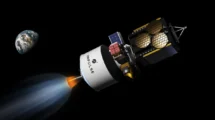

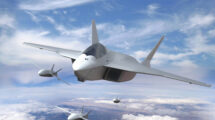
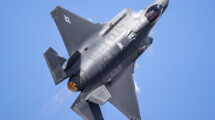

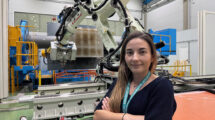

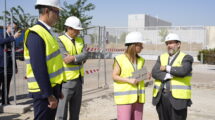

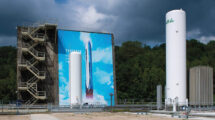
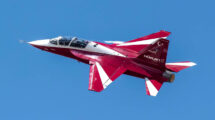

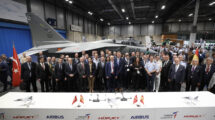
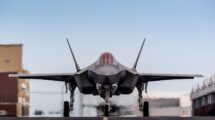

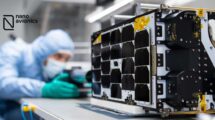
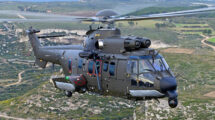

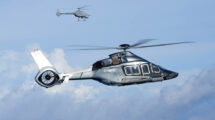
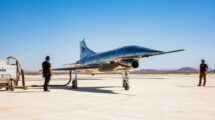

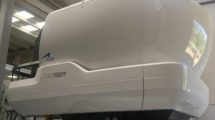

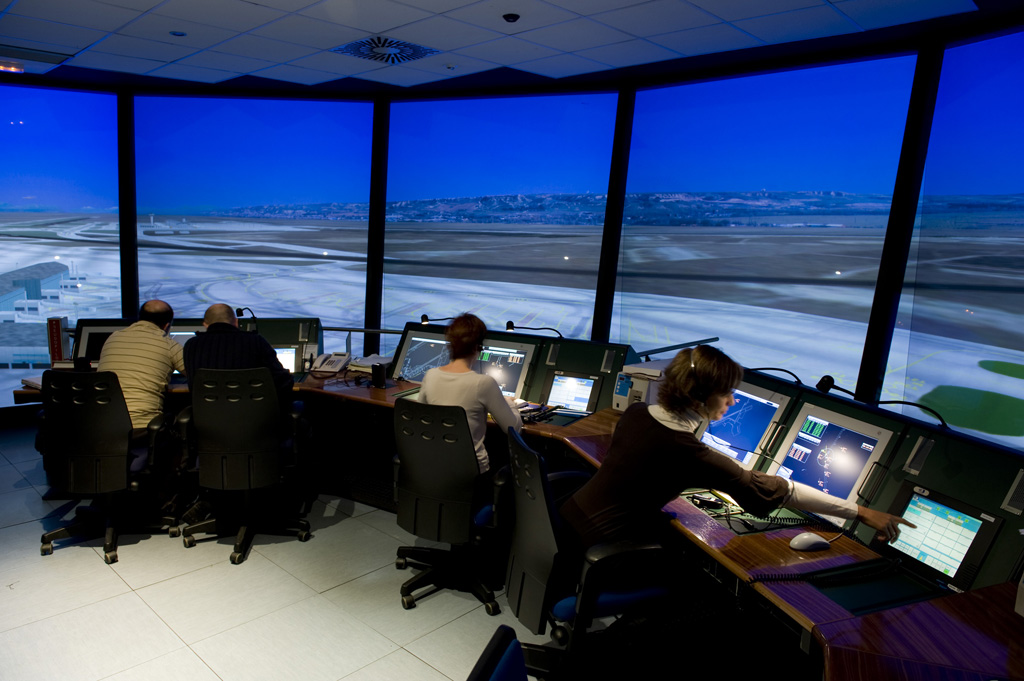
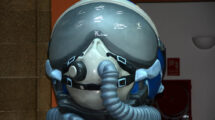

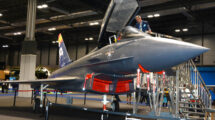

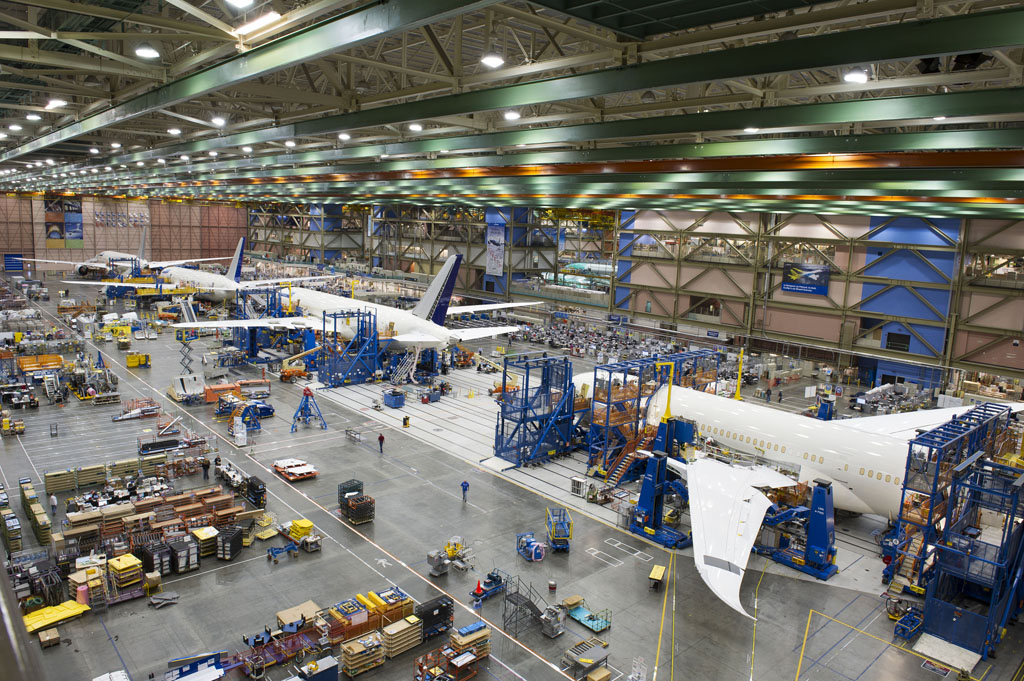


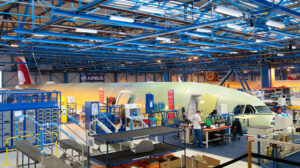








snapbacks hats for cheap
Casque Beats…
woolrich…
Informative article, exactly what I was looking for.
doudoune moncler quincy http://www.pyson.com/tanaweb/pdfs/index.cfm?p=doudoune-moncler-quincy.html